PPT-A Theatre Related Presentation
Author : stefany-barnette | Published Date : 2016-04-01
One done by yours truly Terminology 皮影戏 pí yĭng xì is a shadow theatre using leather puppets The figures are usually moved behind a thin screen and
Presentation Embed Code
Download Presentation
Download Presentation The PPT/PDF document "A Theatre Related Presentation" is the property of its rightful owner. Permission is granted to download and print the materials on this website for personal, non-commercial use only, and to display it on your personal computer provided you do not modify the materials and that you retain all copyright notices contained in the materials. By downloading content from our website, you accept the terms of this agreement.
A Theatre Related Presentation: Transcript
One done by yours truly Terminology 皮影戏 pí yĭng xì is a shadow theatre using leather puppets The figures are usually moved behind a thin screen and is not entirely a show of shadows as it is more of a silhouette shadow This gives the figures some . Advanced Theatre. Background to the Theatre. Roman History. . Rome – in 753 B.C. was a town dominated by Etruria, North of Rome. In 509 B.C., the Etruscan (from Etruria) ruler was expelled, and Rome became a republic (just as Athens became a democracy).. There exist similarities between the theatres and amphitheatres of ancient Rome/Italy. They were constructed out of the same material, Roman concrete, and provided a place for the public to go and see numerous events throughout the Empire. However, they are two entirely different structures, with specific layouts that lend to the different events they held. Amphitheatres did not need superior acoustics, unlike those provided by the structure of a Roman theatre. While amphitheatres would feature races and gladiatorial events, theatres hosted events such as plays, pantomimes, choral events, and orations. Their design, with its . Shakespeare's Globe was the most popular English theater of its time, frequented by people from all walks of Elizabethan life. . From 1599 until 1640 the audiences at the Globe consisted of people from a variety of social and cultural backgrounds. Peasants, prostitutes, merchants, labourers, wealthy citizens and lords and ladies frequented the playhouses of Shakespeare’s London. . Dr. Neighbours. NRHS . Theatre Classes. The land. The myths. The stage. The. . Land. Located in Europe in the Aegean Sea. The Land. PURPOSE OF GREEK DRAMA. Dramas presented by the state at annual religious festivals. . A History. Forward by John . Kenrick. “Let’s start at the very beginning…”. Did Broadway’s GOLDEN AGE end in the 1950s? 60s?. OR. Is the theatre itself “an art form of the now.. ”. January 12, . By Joshua Stringer. Origins. Shadow puppets reached Egypt through India, which in turn got them from China. . They were brought to Egypt when Mohammed . ibn. . Daniyal. wrote three shadow plays. It differs from Turkish . Dionysus. God of wine, theatre, revelry, and fertility. Also known as Bacchus by Romans. Born from the thigh of Zeus (twice born). Instructed on winemaking . Greek theatre came out of the worship of Dionysus. AND FILM. A Comparison. . Two related entertainment genres sharing common themes. :. 1. . The telling of a story. 2. The revelation of character. . Experiences Theatre – the influences of theatre. professions. Part 1. Director. Job Description: A Theatrical Production Director visually interprets the script; guiding the actors in vocal and physical direction and blocking the movement on stage. They coordinate all of the creative aspects of the production and prepare the show for opening.. 1920-1960. “I personally would like to bring a tortoise onto the stage, turn it into a racehorse, then into a hat, a song, a dragon and a fountain of water. One can dare anything in the theatre and it is the place where one dares the least.”. Humans have a basic need to imitate (that is how we acquire most of our learning). Imitation is the basis of all theatre. One definition of theatre is a person or persons imitating the actions and words of others for the benefit of others (actors, plays, audience). The Play and The Theatre Week 4 [Part 1 ] Introduction to Theatre College of the Desert First Critique Due – 9/17/19 A Doll’s House / Our Town Critiques are expected to be AT LEAST FIVE (5) full double-spaced typewritten pages 12/6/2016. Nigel Roberts, Lead Theatre Manager, RDH, NPAG presentation December 2016. 1. 12/6/2016. Nigel Roberts, Lead Theatre Manager, RDH, NPAG presentation December 2016. 2. Balance between professions Nurse/ODP/Health Care Workers/ ATP/Apprentices. institution in anyprevious yearNoTesting PlanNo I prefer to apply test optional
Download Document
Here is the link to download the presentation.
"A Theatre Related Presentation"The content belongs to its owner. You may download and print it for personal use, without modification, and keep all copyright notices. By downloading, you agree to these terms.
Related Documents


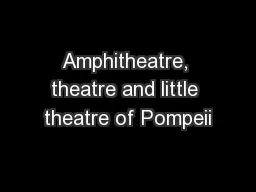

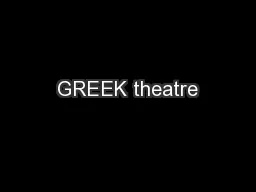

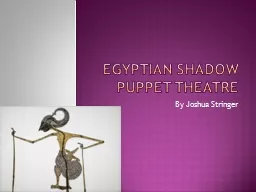
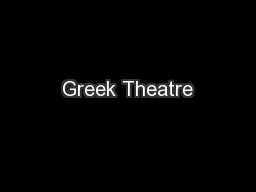


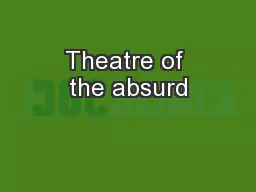

![The Play and The Theatre Week 4 [Part 1 ] Introduction to Theatre](https://thumbs.docslides.com/763708/the-play-and-the-theatre-week-4-part-1-introduction-to-theatre.jpg)

